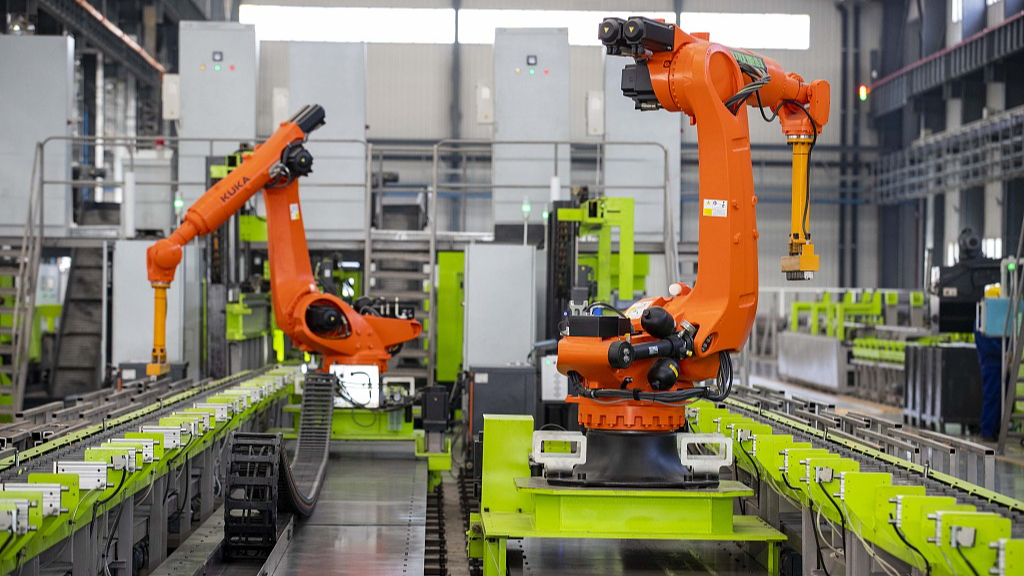China's Ministry of Industry and Information Technology (MIIT) on Saturday released the country's second batch of key industries and application scenarios of 5G network-enhanced Industrial Internet of Things (IIoT).
IIoT refers to the interconnection between sensors, instruments and other devices at factories to improve manufacturing efficiency and industrial processes. With focus on machine-to-machine communication, big data and machine learning, the IIoT has been applied across many industrial sectors.
5G network enables ultra fast data transmission speed and extremely low response time. It can provide last-mile connectivity by providing the speed, reliability, capacity and mobility that manufacturers require for successful IIoT implementation.
5G-enhanced IIoT have been applied in another five key sectors including the petrochemical industry, construction materials, ports, textiles and home appliances, the MIIT announced at the 2021 China 5G + Industrial Internet Conference held in Wuhan, central China's Hubei Province.
Its 10 major application scenarios are: simulation of production unit, precise operations, management and control of energy efficiency, compliance verification of production processes, traceability of production processes, predictive maintenance of equipment, intelligent inventory management at factories, logistics monitoring, virtual reality field service and enterprise collaboration.
The applications of 5G-enhanced IIoT in China have quickly gone from the margins of manufacturing to its key internal links, said Zhao Zhiguo, director of the MIIT's Information and Communications Administration Bureau. Its integration with new technologies, such as artificial intelligence, cloud computing and blockchain, is also deepening, Zhao said.
In May, the MIIT released the first batch of five key industries and 10 application scenarios of 5G-enhanced IIoT, which included industries such as electronic equipment production, equipment manufacturing, steel, mining and the power sector.
The 10 application scenarios included collaborative R&D and design, remote control of equipment, collaborative equipment operations, flexible production and manufacturing, on-site auxiliary assembly, machine vision quality inspection, equipment fault diagnosis, intelligent logistics in factories, unmanned intelligent inspection and intelligent production monitoring.
"The 5G-enhanced IIoT has brought a historic opportunity for traditional industries to achieve leap-frog development, and it's playing an increasingly important role in empowering the real economy, serving the society and benefiting the people," Zhao said.
So far, China has built over 1.15 million 5G base stations, accounting for more than 70 percent of the world's total, according to the MIIT.
It's the world's largest and most advanced standalone 5G network, covering all prefecture-level cities, more than 97 percent of counties and 40 percent of towns.


